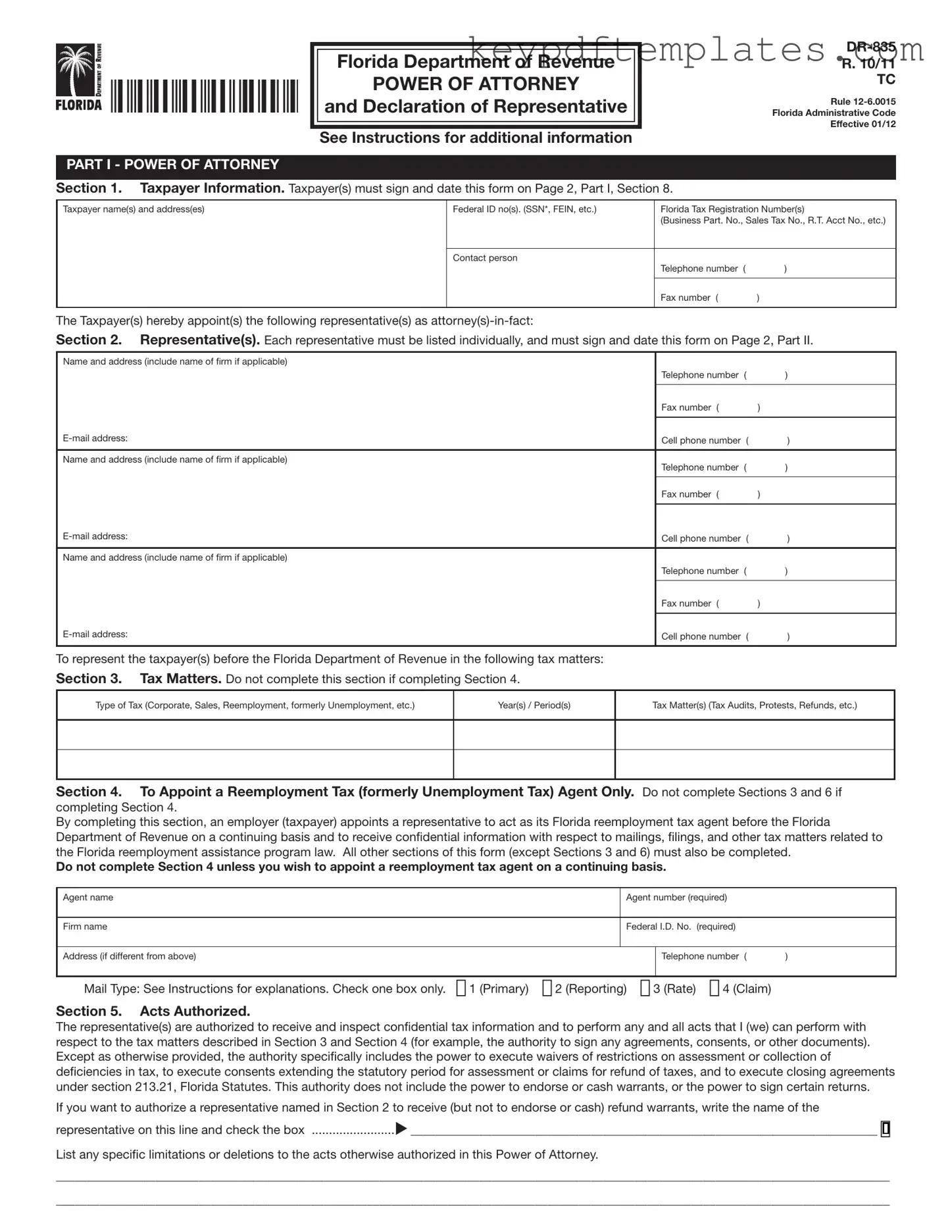Get Tax POA dr 835 Form
The Tax POA DR 835 form is a document that allows taxpayers to appoint someone to represent them before the Colorado Department of Revenue. This form is essential for those who need assistance in managing their tax matters or navigating complex tax situations. By granting this power of attorney, individuals can ensure their interests are effectively communicated and defended.
Modify Document Online
